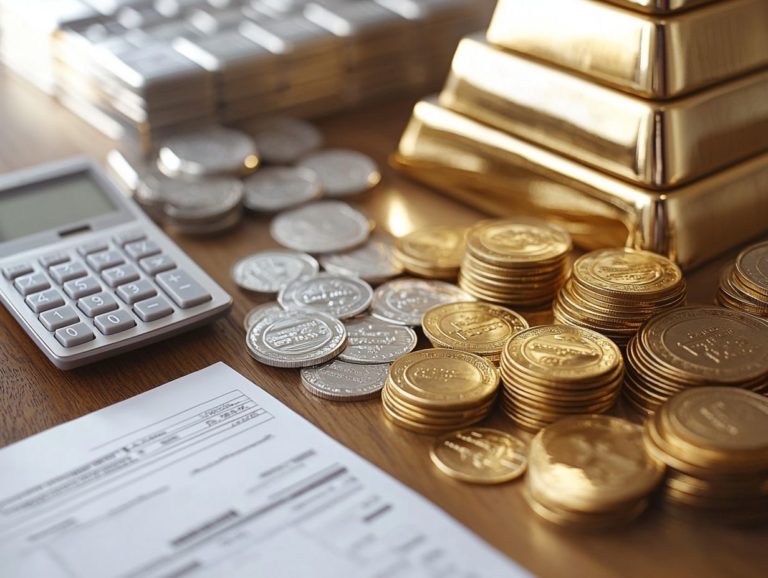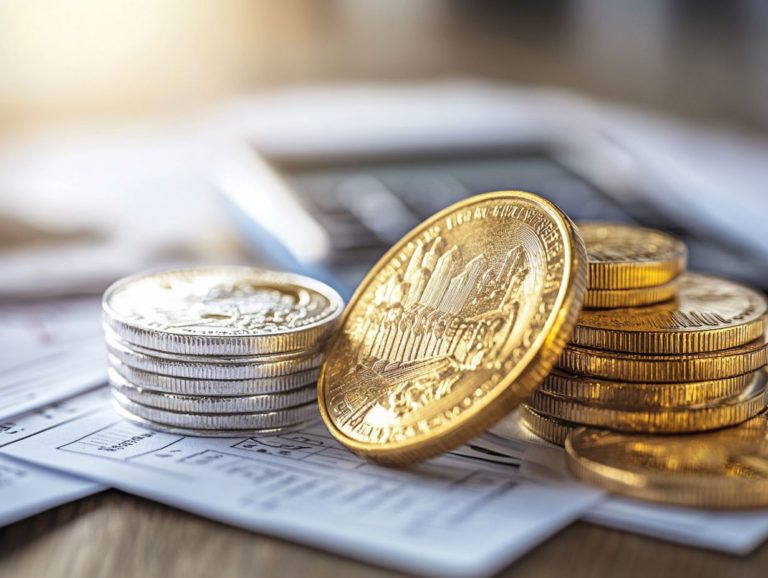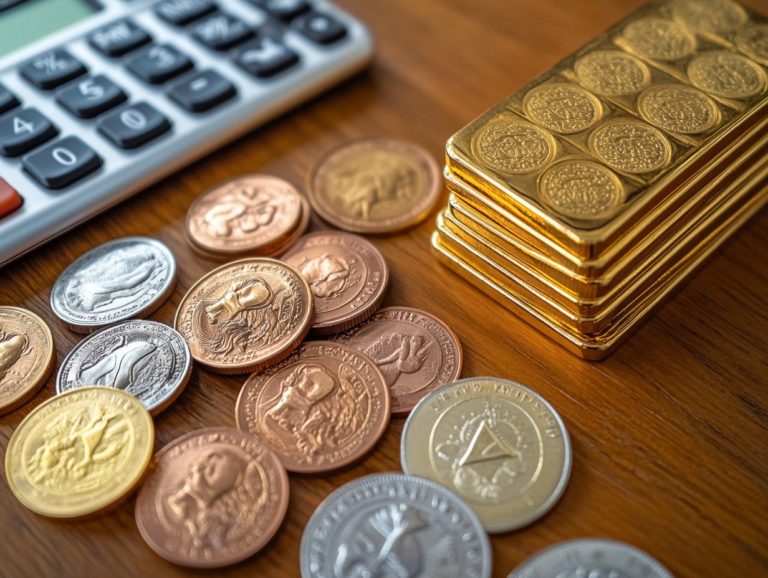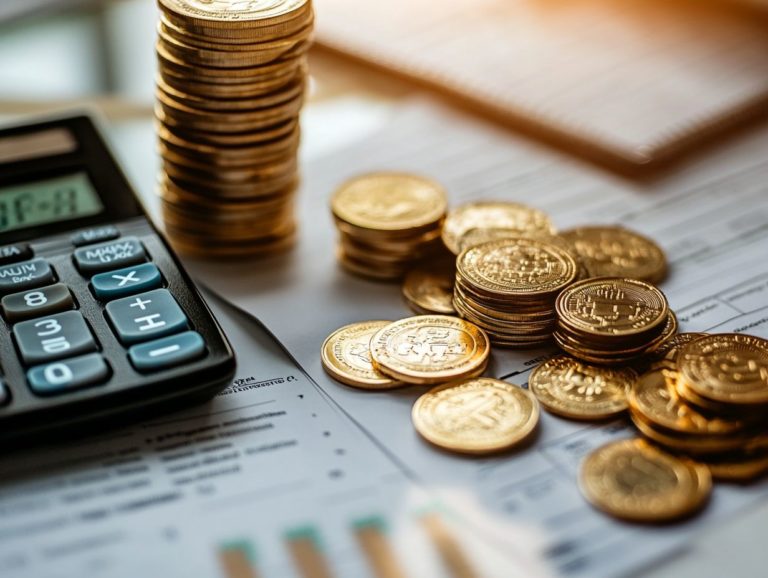Common Tax Myths About Precious Metals Investments
Investing in precious metals can be a lucrative venture; however, navigating tax rules requires careful consideration.
Many investors fall prey to common myths suggesting these investments come with tax-free benefits or can be cleverly concealed from the IRS.
Let s clear up those myths about precious metals and taxes! This article will debunk misconceptions and shed light on the reality of taxes associated with precious metals.
This article will discuss capital gains taxes, reporting requirements, and effective strategies to maximize your tax benefits.
Don t miss out on these crucial insights read on to secure your investments!
Contents
- Key Takeaways:
- Common Myths About Taxes on Precious Metals Investments
- Understanding Taxes on Precious Metals Investments
- Maximizing Tax Benefits for Precious Metals Investments
- Frequently Asked Questions
- 1. Is investing in precious metals subject to capital gains tax?
- 2. Are all precious metals treated the same for tax purposes?
- 3. Can I avoid paying taxes on precious metals by holding them in a retirement account?
- 4. I’ve heard that precious metals are tax-free investments. Is this true?
- 5. Do I need to report my precious metals investments on my tax return?
- 6. Are there any tax benefits to investing in precious metals?
Key Takeaways:
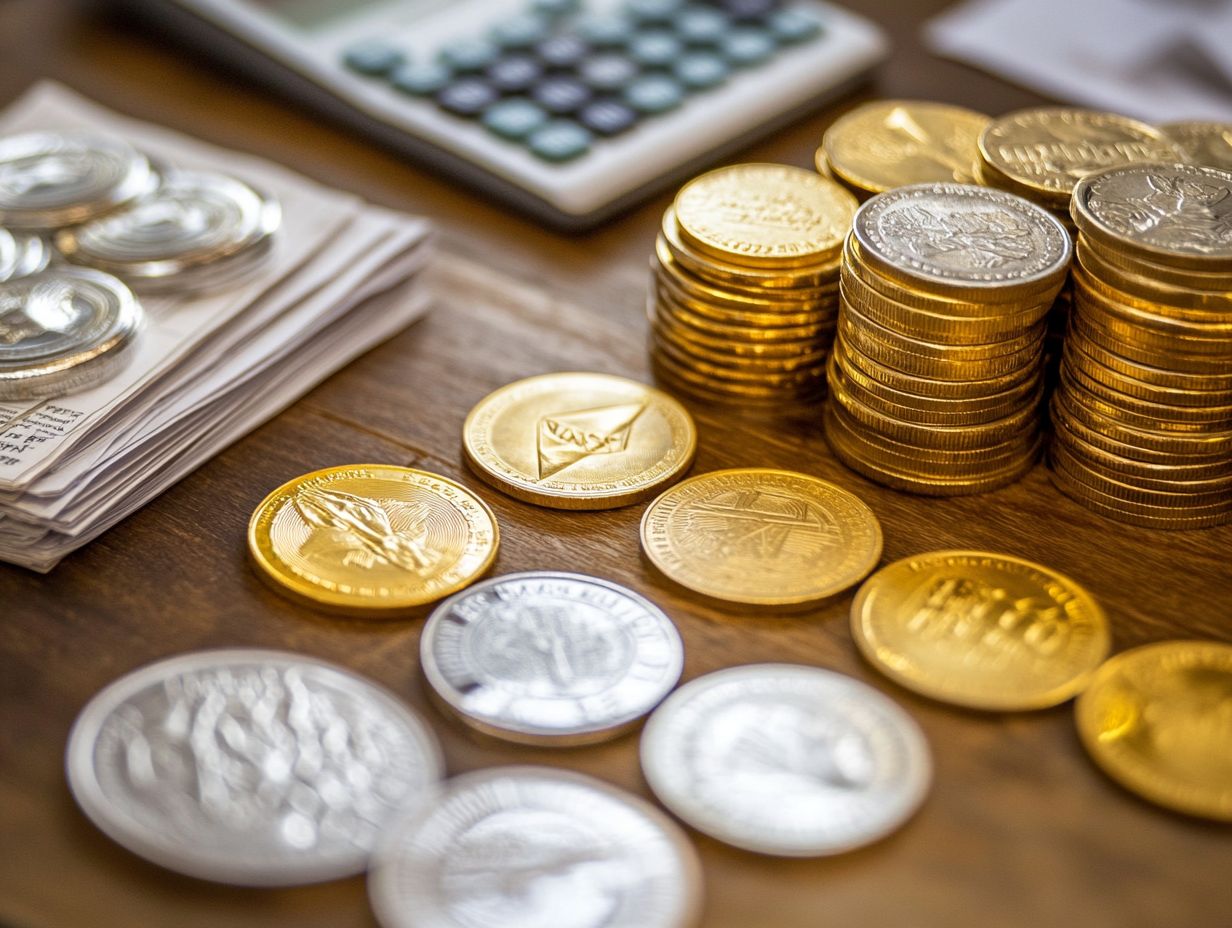
- Contrary to popular belief, precious metals investments are not tax-free. They are subject to capital gains taxes, just like other investments.
- Hiding your precious metals investments is a serious mistake that could lead to tax evasion and serious consequences.
- While it may seem appealing to invest in precious metals due to the perception of lower tax rates, they are taxed at the same rate as other investments. Understanding and properly reporting taxes can help maximize benefits.
What are Precious Metals?
Precious metals gold, silver, platinum, and palladium are among the most coveted durable assets, revered for their unique properties and historical track record as a store of value.
These metals are essential to investment strategies, acting not only as a hedge against inflation but also as a means of portfolio diversification, particularly in times of economic uncertainty.
Their inherent qualities rarity, durability, and malleability make them suitable for a range of applications, from industrial uses to exquisite jewelry and collectibles, enhancing their allure. Gold, in particular, has maintained its value over centuries, making it a trustworthy option for wealth preservation.
The numismatic value of coins, especially those that are rare or carry historical significance, adds another layer of importance, appealing to both collectors and investors alike.
Throughout market downturns, precious metals have consistently shown strong performance, solidifying their reputation as a safe haven during periods of financial turmoil.
Common Myths About Taxes on Precious Metals Investments
Many investors find themselves ensnared by prevalent myths surrounding taxes on precious metals investments, leading to misunderstandings about their tax obligations and potential financial traps.
It’s essential to consult a tax professional to understand the tax obligations of precious metals tied to buying and selling. This proactive approach will help you avoid costly tax mistakes and safeguard your financial well-being.
Myth 1: Precious Metals Are Tax-Free Investments
One of the most widespread misconceptions is that precious metals are tax-free investments, often causing you to overlook essential tax obligations associated with trading these assets.
In reality, IRS regulations dictate that profits from the sale of precious metals may be subject to capital gains tax — a tax on the profit when you sell an asset — and other tax liabilities. Many investors mistakenly believe that simply buying and holding gold or silver exempts them from taxes. However, selling these assets at a profit triggers a tax obligation that can considerably affect your overall investment portfolio. For detailed guidance, refer to our article on tax reporting for precious metals investments.
There are nuances to consider regarding the type of metal, duration of ownership, and whether it s classified as collectibles each of which influences the tax rate applied. Understanding these intricacies is vital for anyone looking to effectively integrate precious metals into their financial strategy.
Myth 2: You Can Avoid Taxes by Hiding Your Precious Metals
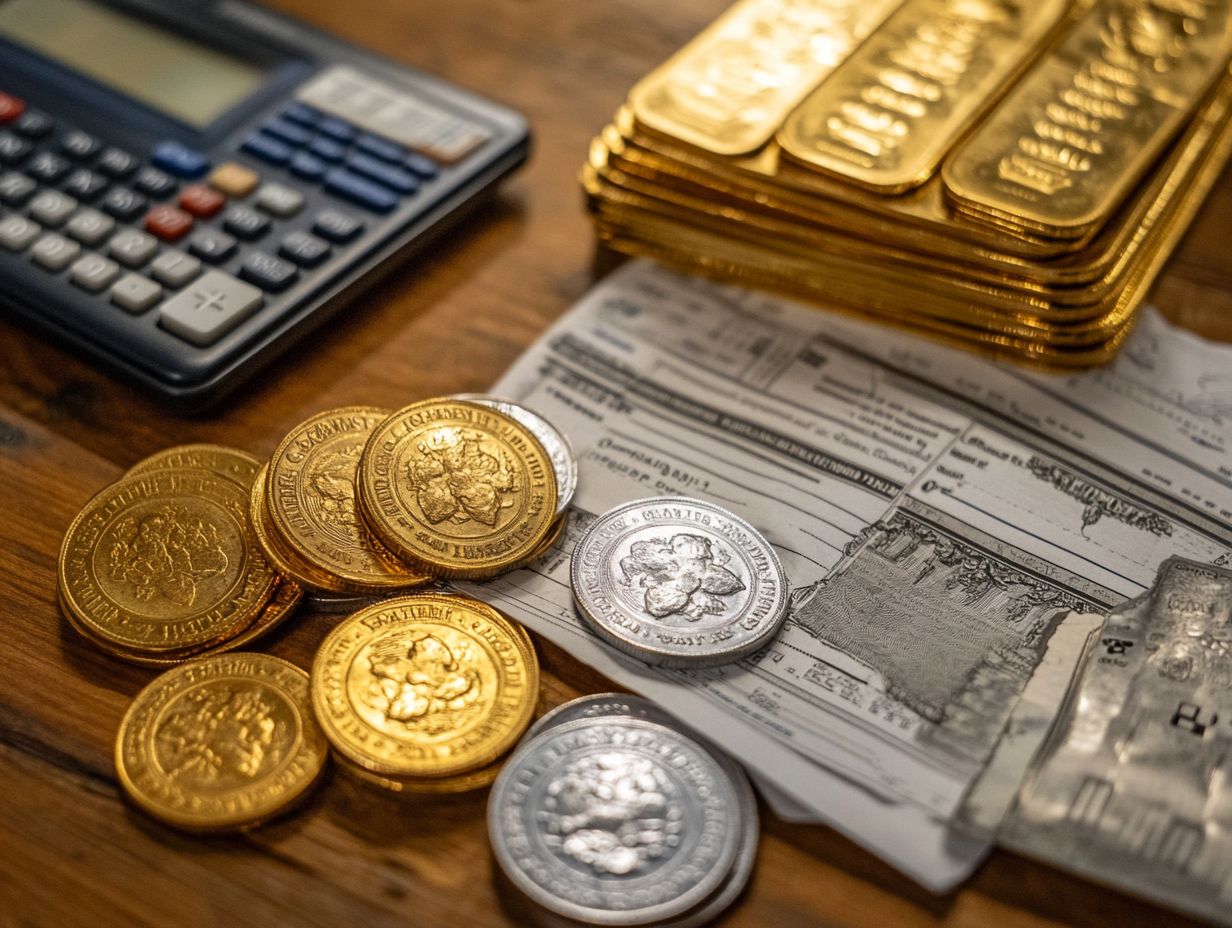
Some investors might think they can sidestep taxes by hiding their precious metals, but that’s a dangerous myth that can lead to severe penalties for tax evasion. The IRS has strict reporting requirements for transactions involving precious metals. If you fail to comply, you could face hefty fines and even criminal charges.
Navigating tax regulations can feel overwhelming. However, not following the rules can extend beyond financial penalties. Concealing assets could lead to audits and investigations that can significantly impact your finances and reputation.
You need to grasp both federal and state laws surrounding precious metals ownership and reporting. Consulting a qualified tax professional is necessary. These experts can provide valuable insights into the legal landscape and help ensure you stay within the law, protecting you from unforeseen liabilities.
Myth 3: Precious Metals Are Taxed at a Lower Rate Than Other Investments
Many investors falsely believe that precious metals are taxed at a lower rate than other investments, like stocks and bonds. This leads to misconceptions about actual tax implications. In truth, the capital gains tax on precious metals can be equal to or even higher than that of other assets, depending on your financial situation and investment returns.
This misunderstanding sets the stage for unrealistic expectations about financial losses and gains. You might think the intrinsic value of metals like gold and silver grants preferential tax treatment. However, taxation primarily hinges on how long you’ve held the asset and the specific gains you’ve realized. Understanding tax strategies for precious metals in today’s market can help clarify these complexities.
The market dynamics, access to financial advice, and current tax regulations can drastically impact the benefits of these investments. Therefore, it’s essential to do thorough research and consult with financial experts to fully understand the tax effects of precious metals investments.
Understanding Taxes on Precious Metals Investments
Understanding the taxes tied to precious metals investments is crucial for investors aiming to navigate the intricate landscape of tax implications and obligations.
Capital gains taxes, IRS regulations, and reporting requirements can significantly influence your investment portfolio and overall financial strategy, especially during market fluctuations.
Capital Gains Taxes on Precious Metals
Capital gains taxes on precious metals create significant tax liabilities for you as an investor. It s crucial to understand how these taxes apply to various transactions. When you sell precious metals like gold or silver coins, consider the potential tax implications for effective financial planning and explore possible tax exemptions.
Calculating capital gains tax involves determining the difference between the purchase price and the selling price, which can lead to either short-term or long-term tax rates. Short-term rates apply to assets held for less than a year, while long-term rates apply to those held longer. Be aware that collectibles, including certain coins, may be subject to a higher capital gains rate. Here are some strategies to help minimize your tax liabilities:
- Hold investments for over a year to qualify for lower tax rates.
- Utilize tax-advantaged accounts.
- Donate precious metals to charity for potential deductions.
Familiarizing yourself with specific exemptions, such as those for 401(k) or IRA holdings, can enhance your tax efficiency as you navigate precious metals taxation.
Reporting Requirements for Precious Metals Investments
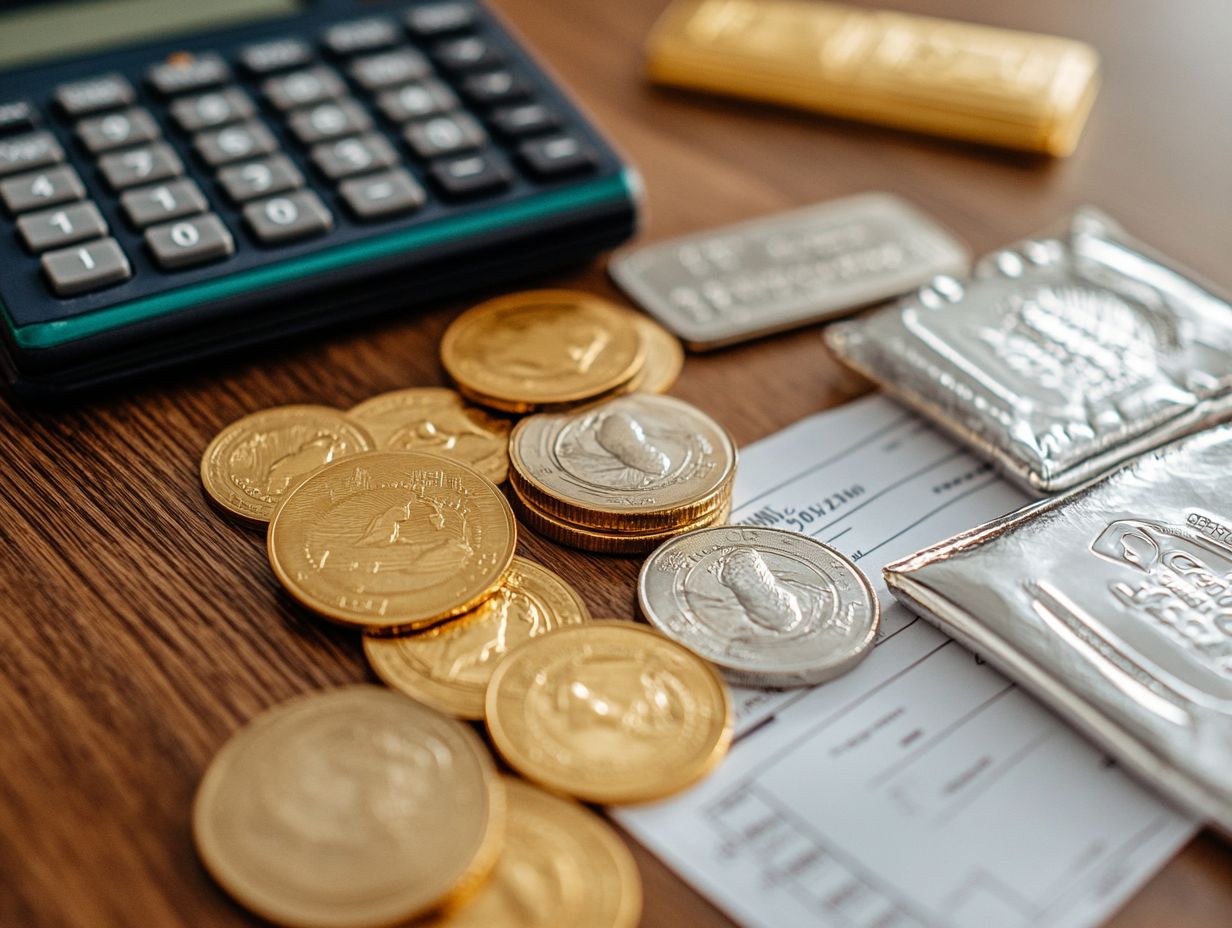
Investors in precious metals must follow specific IRS reporting rules to document their transactions and meet tax obligations.
Completing Form 8949 and Schedule D is essential for reporting gains and losses from buying and selling precious metals. This ensures compliance with government regulations.
You must meticulously track all purchases and sales throughout the year. Accurate records are crucial for successful filing. Form 8949 serves as your primary document for categorizing gains and losses, detailing each transaction’s date, cost basis, and sales price.
After completing this form, transfer the results to Schedule D, which summarizes your overall capital gains and losses.
By following these guidelines, you can navigate the complexities of IRS compliance and avoid potential penalties!
Understanding these reporting obligations is key to maintaining good standing with tax authorities and safeguarding your investments.
Maximizing Tax Benefits for Precious Metals Investments
Maximizing tax benefits for your precious metals investments requires strategic implementation that aligns with your financial planning goals.
By utilizing tax-advantaged accounts, you can enhance the growth of your investments while minimizing tax liabilities linked to precious metals transactions.
Strategies for Reducing Taxes on Precious Metals Investments
Implementing effective tax strategies can significantly help you reduce capital gains tax liabilities when trading precious metals. You can manage tax obligations more effectively and minimize potential financial losses.
Utilizing Individual Retirement Accounts (IRAs) or Health Savings Accounts (HSAs) allows you to hold precious metals without facing immediate tax consequences.
Timing your sales strategically such as selling after holding assets for over a year can lead to lower long-term capital gains rates.
It s essential to maintain comprehensive records of your transactions, including purchase prices and dates. This information will be invaluable during tax preparation.
By following these practices, you can substantially reduce your tax liability and optimize your returns on precious metal investments.
Frequently Asked Questions
Below are common questions investors have regarding taxes on precious metals:
1. Is investing in precious metals subject to capital gains tax?
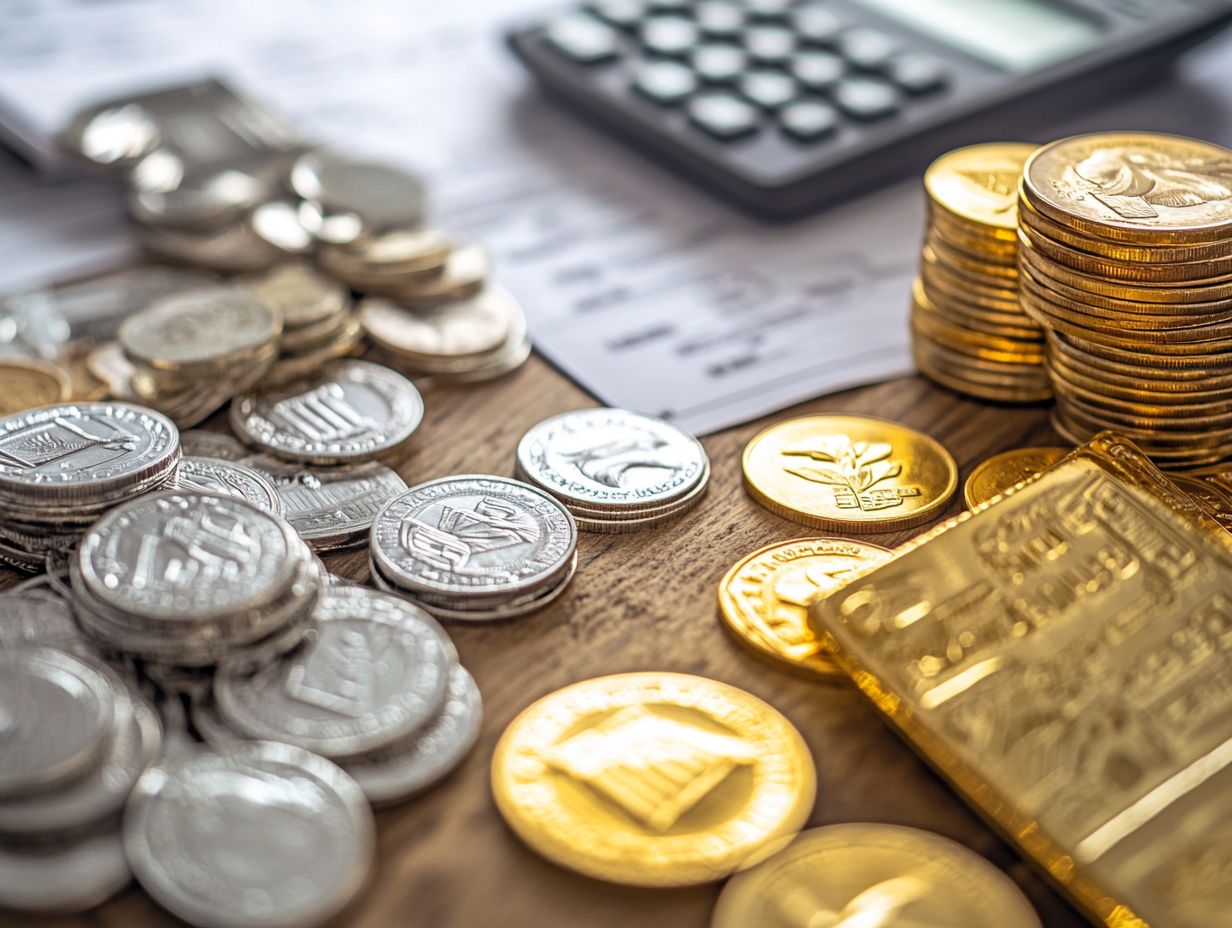
Yes, any profits made from selling precious metals, such as gold or silver, are subject to capital gains tax. This tax is calculated based on the difference between the purchase price and the selling price of the metal.
2. Are all precious metals treated the same for tax purposes?
No, different types of precious metals may be subject to different tax rates. For example, gold and silver are typically taxed at a higher rate compared to other precious metals like platinum or palladium.
3. Can I avoid paying taxes on precious metals by holding them in a retirement account?
No, even if you hold precious metals in a retirement account, any profits made from selling them will still be subject to capital gains tax. However, there may be tax advantages to holding precious metals in a retirement account, such as tax-deferred growth.
4. I’ve heard that precious metals are tax-free investments. Is this true?
No, this is a common misconception. While certain types of retirement accounts may have tax advantages, all profits from selling precious metals are subject to capital gains tax.
5. Do I need to report my precious metals investments on my tax return?
Yes, any gains or losses from selling precious metals must be reported on your tax return. It’s important to keep accurate records of your purchases and sales to report this information accurately.
6. Are there any tax benefits to investing in precious metals?
Wondering about tax benefits when investing in precious metals? While these investments aren t tax-free, there are potential advantages, especially if you hold them in an individual retirement account that you manage yourself.
Consult a tax professional for personalized advice on the best tax strategy for your situation.










